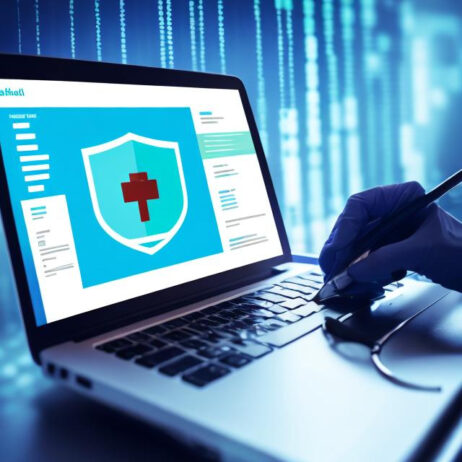
- December 13, 2023
- GuardiansOfIT
- 0
When we assess the worth on the dark web, which among a credit card number, a social security number, and an Electronic Health Record (EHR) carries the most significant value?
In a chilling twist, electronic health records (EHRs) fetch a staggering $1,000 on the black market, dwarfing the measly $5 for a credit card number. This stark value disparity exposes the healthcare industry as a lucrative hunting ground for cybercriminals fueled by the irreplaceable nature of patient data.
For 12 consecutive years, healthcare has borne the brunt of cyberattacks, averaging $10 million per breach, eclipsing even the financial sector’s $6 million. This grim reality is further underscored by a 300% increase in reported cyber incidents to the US Department of Health & Human Services from 2018 to 2022.
The prime suspect? A familiar foe: ransomware. Capitalizing on the critical nature of patient care, ransomware cartels leverage healthcare’s vulnerabilities:
- High digitalization: Medical technology’s advancements rely heavily on digital systems, expanding the attack surface.
- Resource constraints: Understaffing and outdated IT infrastructure leave many healthcare organizations vulnerable due to a lack of cybersecurity expertise.
- High stakes: The pressure to maintain patient care creates a potent incentive for ransom payments, making healthcare a prime target.
But amidst the gloom, a glimmer of hope emerges. Adopting the attacker’s mindset is critical to protecting sensitive data. We can identify potential targets and anticipate their methods by understanding their cost-benefit calculations.
The misconception of lone wolf hackers conducting million-dollar heists needs to be updated. Today’s cybercrime landscape resembles a sophisticated industry with specialization and commodification. Anonymous networks and digital currencies have transformed ransomware into a thriving business.
However, the fundamental tactics remain unchanged: exploiting human errors and software vulnerabilities. These vulnerabilities often lie in surprisingly simple places, like exposed credentials on platforms like GitHub. In 2022, a 67% increase in leaked secrets on GitHub highlights the pervasiveness of this risk, potentially granting access to internal systems and terabytes of data.
Recent vulnerabilities in Becton Dickinson’s FACSChorus software are a stark reminder of ongoing security challenges. Constant vigilance, including monitoring platforms like GitHub and implementing proactive measures like free attack surface audits, is paramount.
Honeytokens, acting as decoys to lure unauthorized access and reduce detection time, can also be a valuable tool in the fight against cybercrime.
The healthcare industry stands at a crossroads in its battle against cyber threats. With valuable data and sophisticated ransomware groups looming, vigilant, proactive strategies are crucial. By monitoring digital footprints, safeguarding exposed assets, and embracing a culture of security awareness, healthcare can protect patient data and privacy in the evolving digital age.

